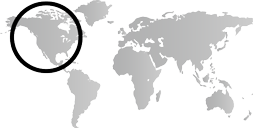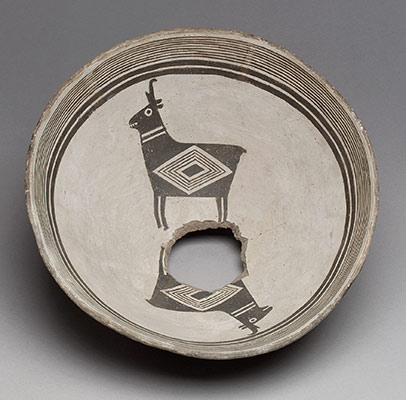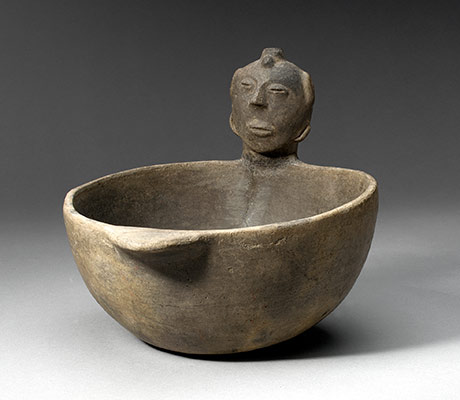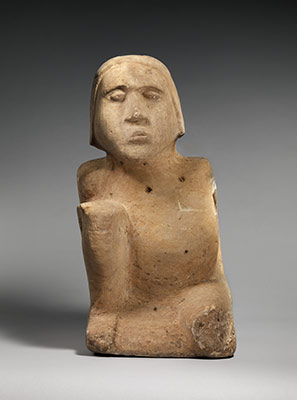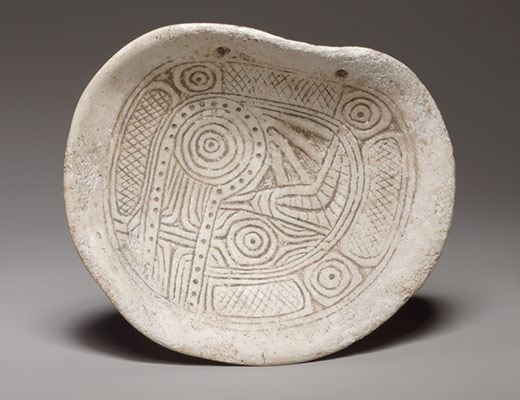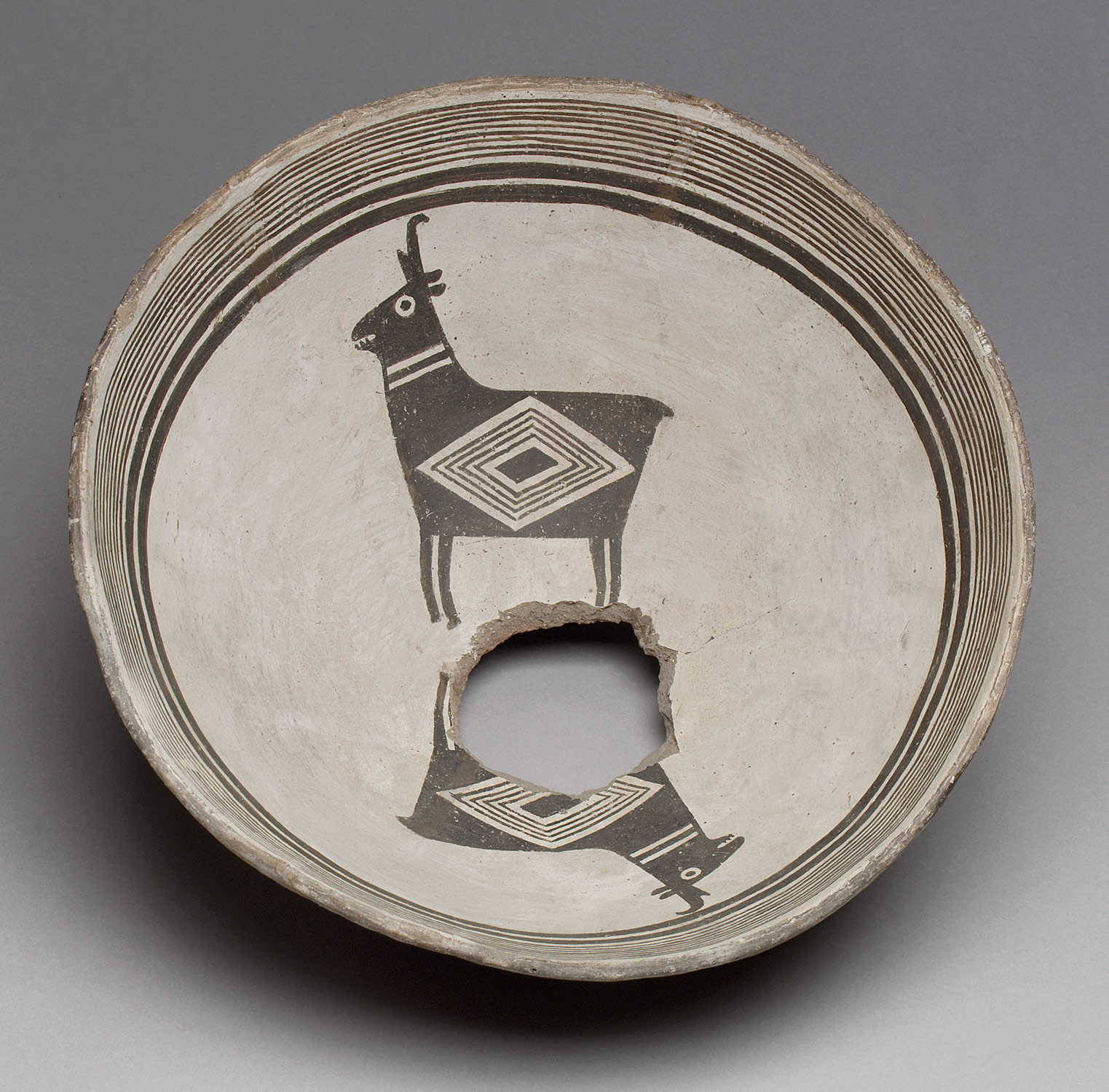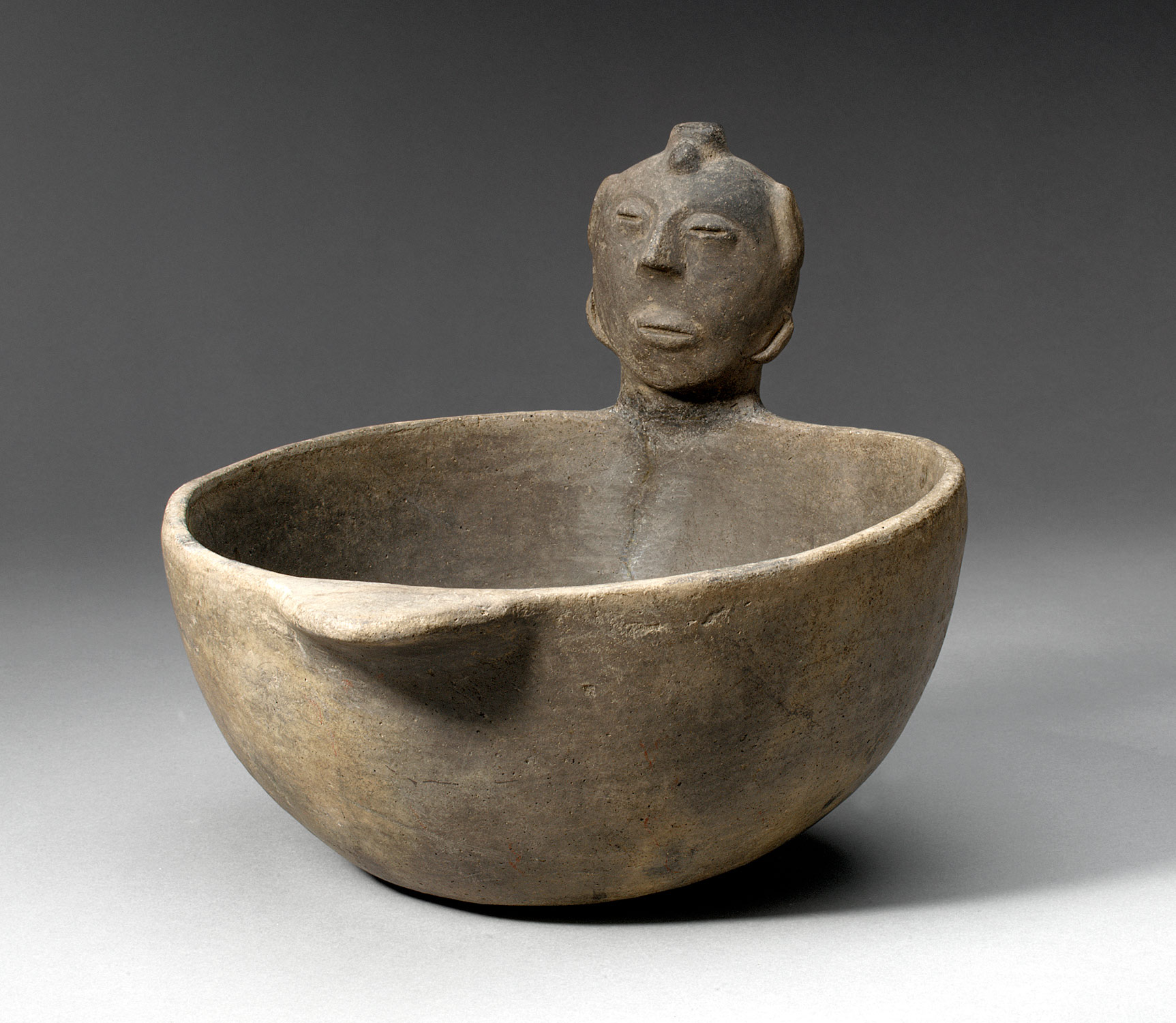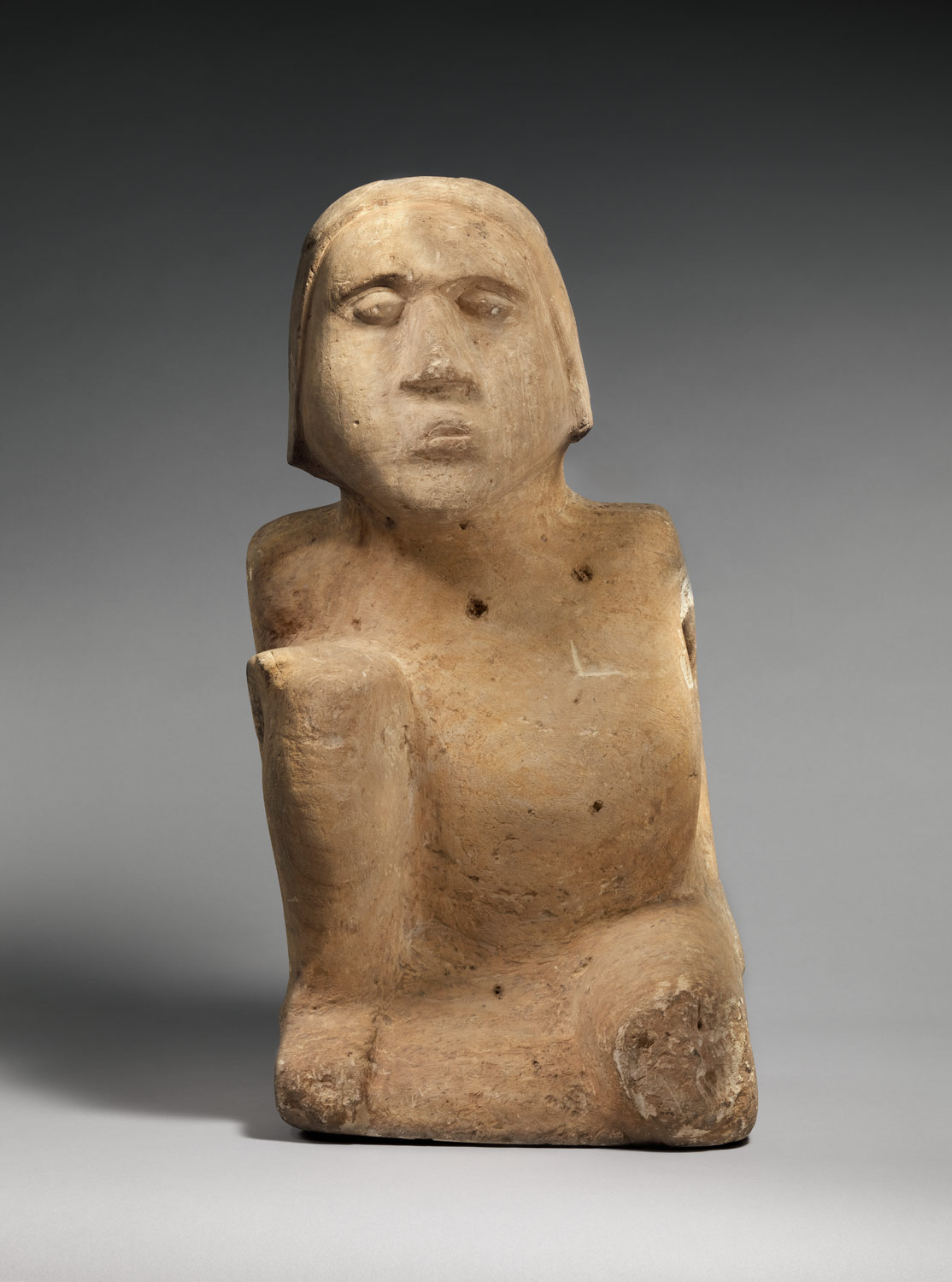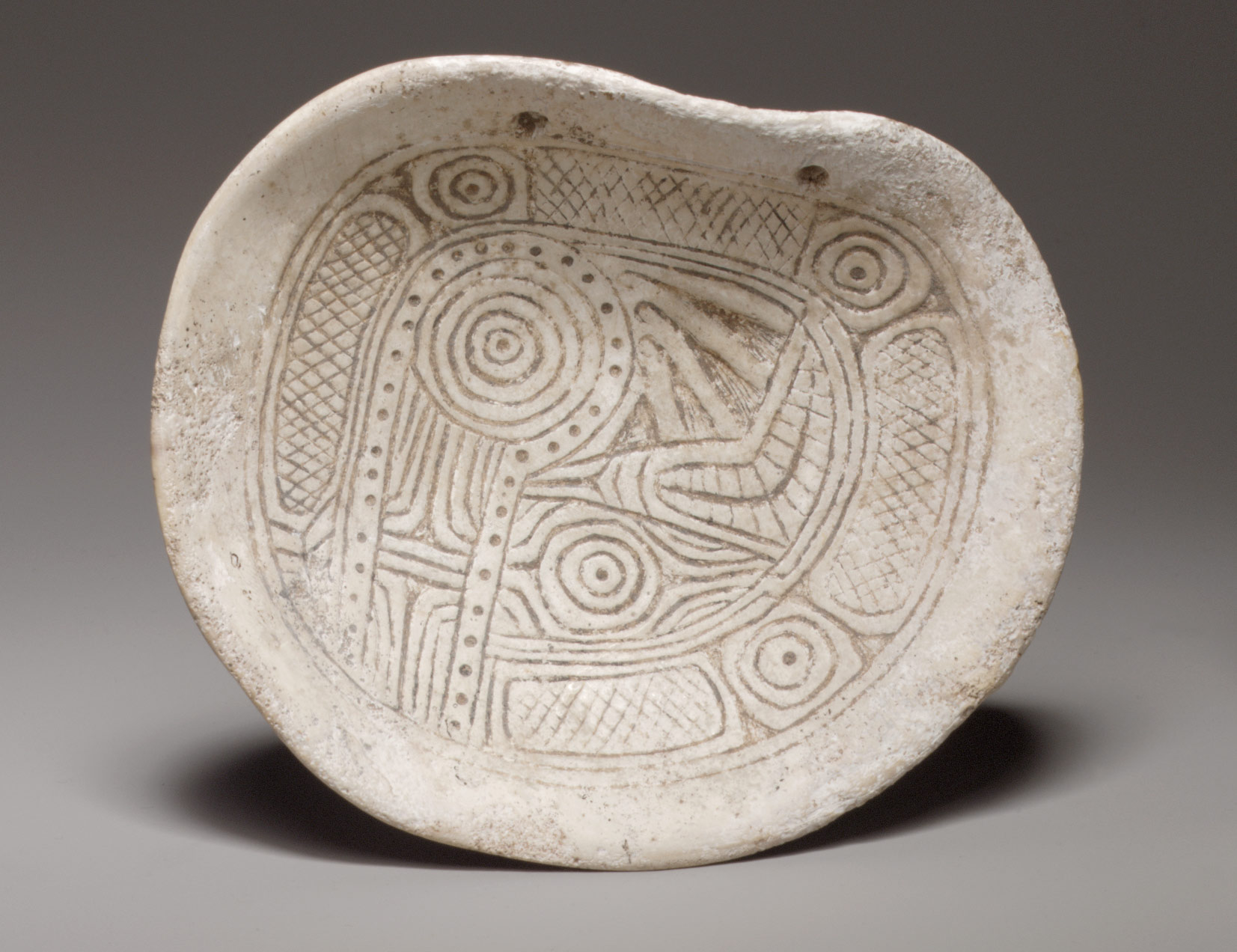Consolidation of populations and incipient political centralization characterize the period, particularly in the Eastern Woodlands and the Southwest. The success of food crops such as maize and beans allows for meaningful concentrations of peoples. Settlements are enlarged along local patterns, with individual centers assuming regional dominance. Cahokia on the Mississippi River floodplain of Illinois expands; its over 100 earthen mounds are used for varying purposes. Important Mississippian sites in the Southeast such as Moundville, Spiro, and Etowah show clear evidence of high-ranking inhabitants with many precious objects in their burials. In the arid Southwest, where the sophisticated influence of Mexico to the south is felt, numerous centers become large only to be abandoned. In the far north, the pan-Arctic Thule culture begins in Alaska and rapidly spreads eastward.
North America, 1000–1400 A.D.
Timeline
1000 A.D.
1100 A.D.
NORTHEAST
SOUTHEAST
PLAINS
SOUTHWEST
NORTHWEST COAST
ARCTIC
1100 A.D.
1200 A.D.
NORTHEAST
SOUTHEAST
PLAINS
SOUTHWEST
NORTHWEST COAST
ARCTIC
1200 A.D.
1300 A.D.
NORTHEAST
SOUTHEAST
PLAINS
SOUTHWEST
NORTHWEST COAST
ARCTIC
1300 A.D.
1400 A.D.
NORTHEAST
SOUTHEAST
PLAINS
SOUTHWEST
NORTHWEST COAST
ARCTIC
Overview
Key Events
-
1000
Villages, known as pueblos, are built over the remains of earlier pithouses; in the Mimbres Valley, New Mexico, Black-on-White ceramics (1978.412.123) are placed in subfloor burials.
-
1000
Mississippian cultural patterns are well established in the Midwest and Southeast, grounded in population growth and economic stability; maize agriculture and long-distance exchange systems are in place.
-
1050
The four-terraced Monks Mound, the largest earthen structure in the United States, is under construction at Cahokia.
-
1100
Pueblo Bonito, the largest of the great houses of Chaco Canyon, is a multistoried structure with almost 700 rooms; the Chaco regional system, with its ceremonial structures known as great kivas, as well as mounds and other earthworks, dominates northwestern New Mexico.
-
1150
The drought in Chaco Canyon leads to its abandonment.
-
1200
Beans are a staple in the Eastern Woodlands and are grown together with maize.
-
1200
Population in the northern San Juan Basin of New Mexico concentrates in cliff dwellings such as Mesa Verde; Snaketown in Arizona is abandoned.
-
1200
Moundville on the Black Warrior River in Alabama, a political and religious center with a large population, produces ceramic, stone, and copper objects.
-
1250
Hohokam settlements increase in southern Arizona. Major construction at Casas Grandes, on the Casas Grandes River in northern Chihuahua, includes ballcourts, walk-in wells, and sewer systems. Casas Grandes is an important center for trade with Mexico.
-
1300
The inhabitants of Spiro, in Le Flore County, Oklahoma, enlarge Craig Mound with aspects of both platform and funerary structures; many objects of the Southern Cult are placed in burials.
-
1300
Etowah, in northeastern Georgia, dominates the region; its major mounds, Mounds A, B, and C, are enlarged, and precious objects of the Southern Cult are placed in Mound C burials.
-
1300
The population of Cahokia declines; a defensive wall is built at the site’s center.
-
1300
Populations leave the northern region of the Southwest and settle south along the Little Colorado River and the Rio Grande.
-
1325
The Kachina (Katsina) cult is established in the Southwest’s upper Little Colorado River Valley. The cult is visually manifest in supernatural beings, masked impersonators, and dolls.
-
1350
In the Southwest’s Puebloan area, village size increases and populations concentrate into fewer, larger centers; the enclosed plaza–possibly an influence from Mexico–becomes common.
-
1350
The Southern Cult reaches its peak of influence. Similarities in religious practices and art proliferate across the Eastern Woodlands; warrior, bird-man, and serpent imagery are among the visual themes.
Citation
“North America, 1000–1400 A.D.” In Heilbrunn Timeline of Art History. New York: The Metropolitan Museum of Art, 2000–. http://www.metmuseum.org/toah/ht/?period=07®ion=na (October 2001)
Related
Map
